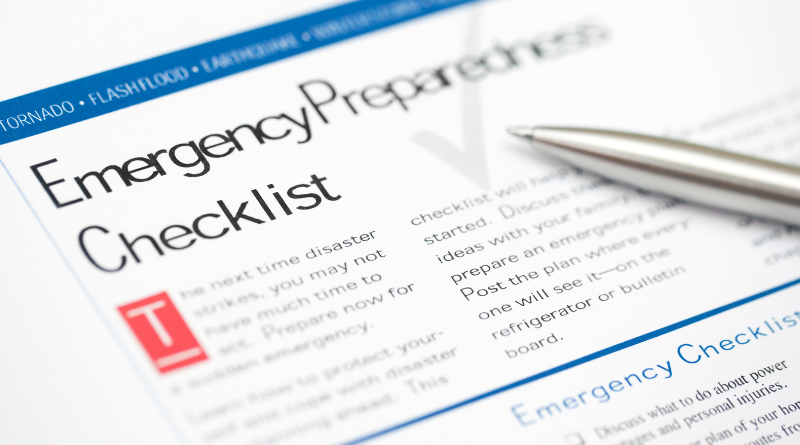
Financial Literacy: Lunch Box Budgeting
School is in session! How will your kids spend their money this semester?
Money is a powerful thing, especially in the hands of a brand-new spender. A child or teen with her first allowance or paycheck may find herself overwhelmed by all the possibilities of how it can be spent. Learning about responsible spending and saving is an important early step in your child’s financial literacy journey.
Easier said than done, though! With the many temptations and expenses of modern life, it can be challenging for anyone to muster discipline to avoid overspending. Help prepare your child for the perils and pitfalls of spending money by emphasizing the concepts below.
Distinguishing Needs from Wants
As children grow and begin to have necessary expenses of their own, the necessity of reserving money for those expenses can escape even the most diligent of young adults. That understanding — or lack thereof — could prevent or contribute to unnecessary spending in adulthood.
Talk with your child about the various things that are necessary for survival. Discuss the ways in which life would be different in the absence of those things. For younger children, it may help to focus on things such as food, clothing, and things that must be purchased from a store; teens and young adults may have a stronger grasp of bills, utilities and services.

‘Needs’ and ‘wants’ are not distinct categories, and some purchases fall into a gray area. Some things may not be strictly necessary, but the quality-of-life improvement they offer prioritizes them over ‘wants’. For instance, owning a car can be foregone in locations with reliable public transportation, but in many places cars are ‘needs’. Consider with your child the unique things that benefit your lives significantly, and how you might make do without them.
Additionally, some necessary expenses vary in cost based on factors such as brand or quality. A shirt could cost $8, $80 or $800, depending on whether it is purchased at a thrift store, a department store or a high-end designer. Help your young adult consider the pros and cons of buying things at varying price points. Is the $80 shirt more durable? Does the status provided by the $800 shirt make it so much more valuable? Everyone’s financial situation is different, but contemplating the differences in costs may not come intuitively to everyone. Check out the recording of Plano Public Library’s Game of Life program for some examples of the ways in which expenses can vary based on the choices we make.
Setting Goals
Your child’s ‘wants’ offer an opportunity for financial literacy just as much as his ‘needs’. Help your child build a basic budget to understand how much money should be set aside before they can buy that video game, purse or movie ticket they want.
First, list out anything that they will need to spend money on for the month. While younger children’s ‘need’ category may be rather minimal, teenagers may be paying for anything from off-campus lunches to gasoline. These expenses should have a minimum ‘fixed’ value, which they must set aside for that purpose.
To achieve a financial goal more quickly, a prudent spender might set aside all money not going toward the ‘need’ category to save up for that target desire. However, there may be other, smaller ‘wants’ that your child has in mind. Encourage them to set aside at least a minimum amount per month for their major expense; the rest can go toward snacks, clothes or anything else that your child wants throughout the month.
Help your child calculate, based on per-month savings, how long it will take to achieve their goal!
Additional Resources
Want to learn more about personal finance with your child? Check out some of Plano Public Library’s materials below:

What do I Need? What Do I Want? by Rachel Eagen
This title discusses the important difference between wants and needs, and how it relates to money. Through imaginative activities and relatable “What would you do?” scenarios, children will learn how to weigh the pros and cons of a purchase, and to equate smart money choices with examples from their own lives.

Managing Money by Emma Huddleston
Describes basic money skills such as spending and saving or creating a budget. Includes fun facts and a “Try it Out” special feature.

The Bottom Line: Money Basics by Diane Dakers
The basic concepts of financial literacy are explored in this important book for young people. Relevant and accessible terms and real-world examples teach readers about financial responsibility and how to think critically about their wants and needs. Financial planning strategies are discussed and opportunities to practice activities, such as budgeting and record keeping, are provided.

Saving Money by Nadia Higgins
Early readers learn the fundamentals of saving and why it’s important. A labeled diagram helps aid readers, while a picture glossary reinforces new vocabulary. Children can learn more about saving money online using our safe search engine that provides relevant, age-appropriate websites.
LinkedIn Learning Courses
Formerly known as Lynda.com, LinkedIn Learning offers thousands of courses on any number of topics, including career. See our blog post to get started. The following courses may be particularly suited for teens interested in exploring financial independence:
Financial Adulting with WealthFit, released November 2020
When it comes to your finances, there’s no time like the present to grow up and start acting like a real adult. In this course, you can learn how to move beyond your fears about money—and start making money work for you. It’s never too late to take control! Learn step-by-step techniques to eliminate bad debt, build a good credit score, and generate passive income.
Evaluating College as an Investment with Wealthfit, released September 2020
College is supposed to help people start their careers off right. But if you pick the wrong major for you—and pay the full sticker price for tuition—higher education might have the opposite effect. In this course, get tips for finding your dream career, getting your college paid for (without loans!), and looking at higher education with an investor’s mindset. Discover how to pick a career that’s aligned with your personality, strengths, and favorite subjects; shadow real-world experts to receive guidance; secure scholarships; and maximize the investment in your college education.
Teaching Your Kids About Finance with Winnie Sun, released August 2019
Financially savvy parents raise financially savvy kids. In this course, join Winnie Sun—a longtime financial advisor and money personality on Good Day LA—as she lays out how to talk to your kids about money.
Budgeting in Real Life with Madecraft and Natalie Taylor, released November 2020
Most budgets fail. But it’s not because the people who made them failed—it’s because they were set up to fail. Budgets are useless if they don’t work in real life. In this course, learn how to create a budget that meets you where you are.
We hope that these resources help you on your financial literacy journey. Check out more of our Thinking Money posts, including booklists. You can find all of these and more at your local Plano Public Library




